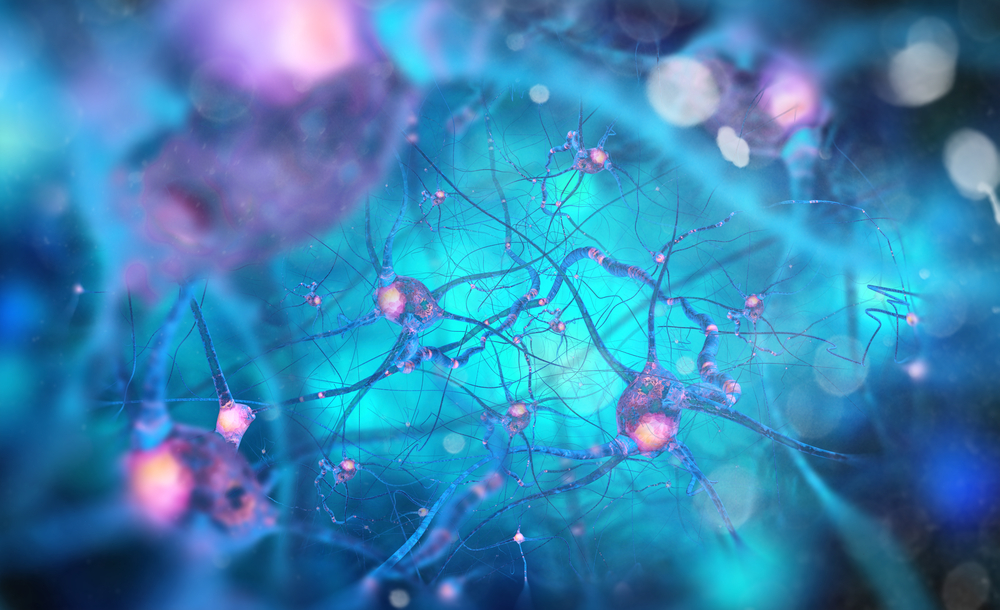Gene Therapy Targeting SARM1 May Inhibit Neuron Degeneration in ALS, Mouse Study Shows

A gene therapy designed to block the activity of SARM1 protein prevented the loss of axons — long projections that connect nerve cells and transport information — making the therapy a potential strategy to reduce the loss of peripheral nerves in several neurodegenerative diseases, including amyotrophic lateral sclerosis (ALS), according to a mouse study.
The study, “Gene therapy targeting SARM1 blocks pathological axon degeneration in mice,” was published in the Journal of Experimental Medicine.
The loss of axons — the long, slender projections of a neuron whose job is to transmit information (electrical impulses) to different neurons, muscles, and glands — is characteristic of many neurodegenerative diseases, including ALS. There is no treatment currently that effectively inhibits axon degeneration.
In previous studies, the SARM1 protein has been identified as a central player in axon degeneration. Deletion of the gene had a protective effect against axon degeneration after injury, in fruit fly and mouse models of nerve degeneration.
SARM1 works by rapidly degrading a metabolite, called NAD+, causing a metabolic failure in neurons that trigger axon degeneration. When SARM1 protein is mutated, it prevents rapid energy loss and subsequent destruction of axons. There is also no current therapy that targets SARM1.
Therefore, researchers at the Washington University School of Medicine in St. Louis set out to develop a gene therapy to block the activity of SARM1.
SARM1 is composed of multiple components that must bind together in order for the protein to work properly. If one of the components is changed, the protein assembly is faulty, and the protein is unable to function. Therefore, it would be enough for scientists to alter or mutate a part of SARM1 in order to inhibit its function.
The team introduced single mutations, affecting only one nucleotide — the building blocks of DNA — in the SARM1 gene, in order for it to produce a faulty protein. Similar to neurons without SARM1, when this gene therapy was inserted into neurons, no axon degeneration was observed.
Accordingly, in injured neurons with wild-type (normal) SARM1, the levels of NAD+ were reduced but when treated with the gene therapy, NAD+ levels remained constant.
The researchers treated neurons with vincristine, a chemotherapy drug, to simulate nerve cell damage, which led to axonal fragmentation two days after treatment. However, neurons that received the gene therapy remained intact with normal metabolic activity, showing how the therapy was able to inhibit SARM1’s degenerative function.
To test if the results could be replicated in mice, the team used an adeno-associated virus to deliver the gene therapy, which was infused with a fluorescent green protein so the researchers could detect it.
The team made sure that the gene therapy was only “active” in neurons — its activity was under the control of a human-specific synapsin promoter only active in neurons.
They delivered the gene therapy to mice with severe axonal degeneration and observed that, within five weeks, a robust green signal was detected in several of the affected nerves, including peripheral nerves and nerve cells in the dorsal root ganglion. This meant that the gene therapy was active.
The sciatic nerve of the mice was damaged to trigger axonal degeneration. In mice given the gene therapy, the axons remained intact after five days — neurons preserved their normal conformation, architecture and protective myelin cover thickness — unlike what happened in the control animals, which showed a loss of about 99 percent of axons in injury sites. No significant differences were found in mice given the gene therapy. Even 10 days after injury, the axons in the gene-therapy-treated mice remained intact.
“With our viral gene therapy, we delivered a mutated form of SARM1 that is not only inactive itself but also blocks normal SARM1 proteins that have become activated in mice with nerve injuries,” senior study author Jeffrey D. Milbrandt, MD, PhD, said in a university news release. “For a long time, viral gene therapy was a pipe dream, but there are now a number of ongoing clinical trials in other disorders that suggest we are on a promising track.”
Added co-senior author Aaron DiAntonio, MD, PhD: “This has the potential to be transformative because it cuts across so many diseases. Rather than addressing a single disease, it is potentially a treatment for a disease process that is shared among many different neurodegenerative disorders.”
The researchers are also developing small molecules to target SARM1 as an alternative to gene therapy.






